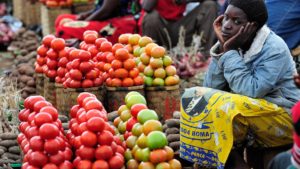FAO global food prices hit two-year low in May
June 2, 2023520 views0 comments
By Onome Amuge
The benchmark index of international food commodity prices declined to its lowest level in two years in May 2023 amid sharp falls in quotations for most cereals, vegetable oils and dairy products which offset increases in the sugar and meat price index.
The Food and Agriculture Organization of the United Nations (FAO) disclosed this in the latest FAO food price index report, which monitors monthly changes in the international prices of a basket of commonly-traded food commodities.
According to the report, the global food price index averaged 124.3 points in May , 2.6 per cent lower than 127.2 points recorded in April and as much as a 22.1 percent decline or 35.4 points below the all-time high reached in March 2022.
Read Also:
The report stated that the FAO cereal price index was down 4.8 per cent from the previous month, led by a 9.8 per cent drop in world maize quotations which was attributed to a favourable production outlook along with slow import demand. World wheat prices also plunged by 3.5 percent, reflecting ample supplies and the new extension of the Black Sea Grain Initiative. By contrast, international prices of rice maintained an increase in May, sustained by Asian purchases and tighter supplies in some exporting countries, such as Vietnam and Pakistan.
The FAO vegetable oil price index dropped by 8.7 per cent in May, averaging 48.2 per cent below its year-earlier level. International palm oil prices fell significantly from April, as protracted weak global import purchases coincided with rising outputs in major producing countries. World soyoil prices fell for the sixth consecutive month amid a bumper soybean crop in Brazil and higher-than-expected stocks in the United States of America. Rapeseed and sunflower oil prices continued to decline on ample global supplies.
In a similar trend, the FAO dairy price index plunged by 3.2 percent from April, led by a steep drop in international cheese prices due mainly to ample export availability amid seasonally high milk production in the northern hemisphere. However, international quotations for milk powders rebounded as did those for butter.
On the other hand, the FAO sugar price index recorded its fourth consecutive monthly increase, up by 5.5 percent from April and reaching a level nearly 31 percent higher than a year earlier. The jump, according to the report, reflected tighter global availability, rising concerns over the impact of the El Niño phenomenon on next season’s crops, and shipping delays amid strong competition from soybean and maize in Brazil.
“The positive outlook for 2023 sugarcane crops in Brazil prevented larger monthly price increases, as did lower international crude oil prices,” the FAO said.
The FAO meat price Index also jumped in May, rising by 1.0 per cent. This, the FAO explained, was driven primarily by a steady high Asian import demand for poultry meat and persistent supply tightness for bovine meat in the U.S.
The FAO global food price index has maintained a consistent drop since January this year, except in April when the index averaged 127. 2 points, up 0.6 per cent from March. This was marked by a surge in world quotations for sugar,meat and rice.

